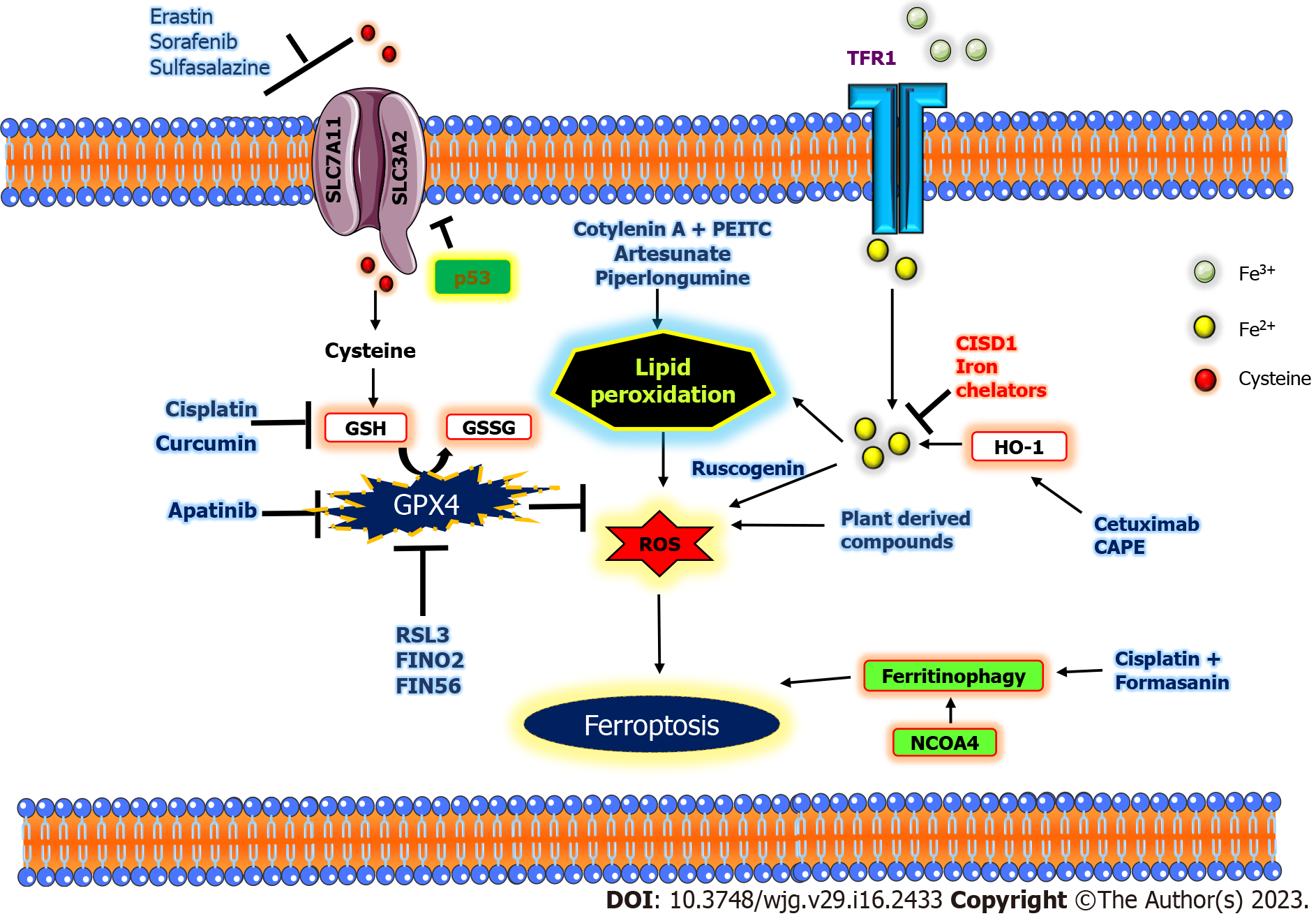Copyright
©The Author(s) 2023.
World J Gastroenterol. Apr 28, 2023; 29(16): 2433-2451
Published online Apr 28, 2023. doi: 10.3748/wjg.v29.i16.2433
Published online Apr 28, 2023. doi: 10.3748/wjg.v29.i16.2433
Figure 2 Regulation of ferroptosis in gastrointestinal tumors is schematically illustrated.
The factors cotylenin A, phenethyl isothiocyanate, artesunate, and piperlongumine induce lipid peroxidation and thereby ferroptosis. Small molecules such as erastin, sorafenib, and sulfasalazine inhibit system Xcˉ thereby inducing ferroptosis through glutathione peroxidase 4 (GPX4). Cisplatin, curcumin, and apatinib inhibit GPX4 thereby attenuating reactive oxygen species. Several inducers of ferroptosis such as RAS-selective lethal 3, FINO2, and FIN56 inhibit GPX4. Several synthetic and natural compounds regulate ferroptosis through hemoxygenase leading to iron overload. Transferrin receptor 1 mediates endocytosis of iron particles and facilitates ferroptosis. CDGSH iron sulfur domain 1, an iron chelator, blocks iron production and inhibits ferroptosis. Several compounds mediate ferritin degradation via ferritinophagy and modulate ferroptosis. CAPE: Caffeic acid phenethyl ester; CISD1: CDGSH iron sulfur domain 1; GSH: Glutathione; GSSG: Glutathione disulfide; HO-1: Heme oxygenase-1; PEITC: Phenethyl isothiocyanate; RSL3: Ras-selective lethal 3; ROS: Reactive oxygen species; SLC3A2: Solute carrier family 3 member 2; SLC7A11: Solute carrier family 7 member 11; TFR1: Transferrin receptor 1.
- Citation: Rabitha R, Shivani S, Showket Y, Sudhandiran G. Ferroptosis regulates key signaling pathways in gastrointestinal tumors: Underlying mechanisms and therapeutic strategies. World J Gastroenterol 2023; 29(16): 2433-2451
- URL: https://www.wjgnet.com/1007-9327/full/v29/i16/2433.htm
- DOI: https://dx.doi.org/10.3748/wjg.v29.i16.2433









